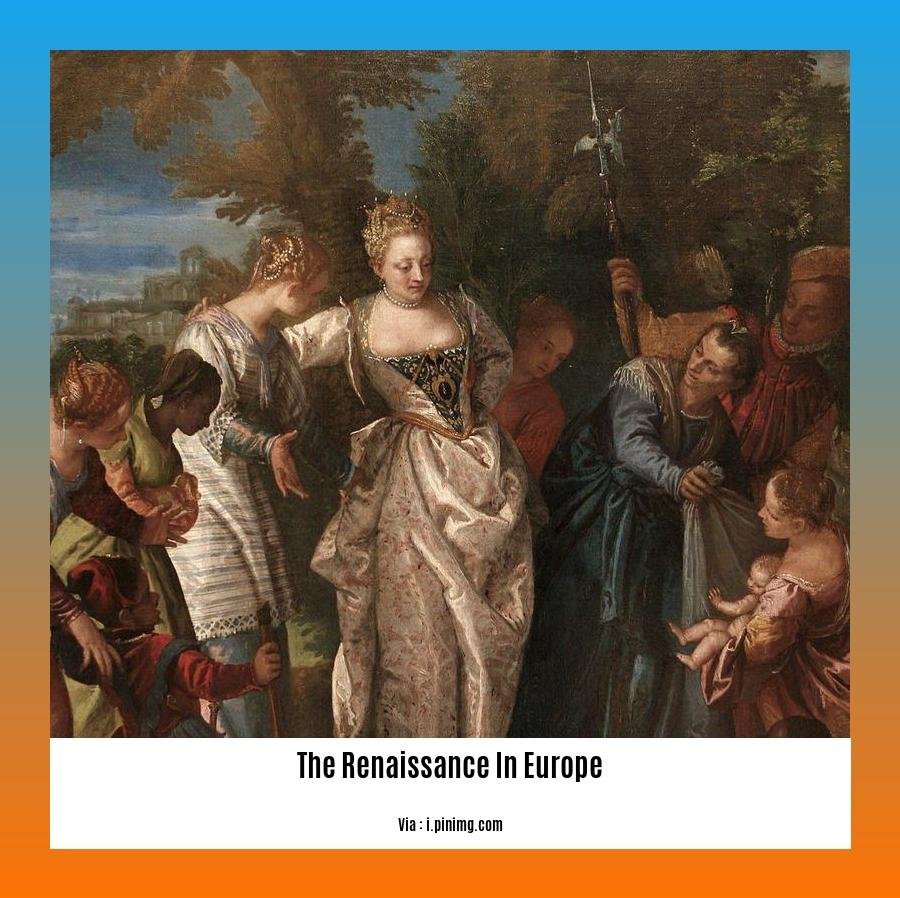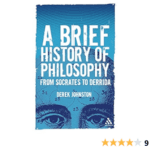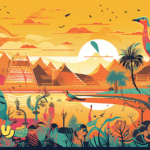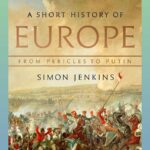Embark on a captivating journey through [The Renaissance in Europe: A Historical Exploration]. This pivotal era, spanning the 14th to the 17th centuries, witnessed an extraordinary blossoming of art, science, literature, and culture. Join us as we delve into the intricate tapestry of this transformative period, uncovering its origins, key figures, and lasting impact on the Western world.
Key Takeaways:
- The Renaissance was a major period of rebirth and transformation in Europe.
- It marked the shift from the Middle Ages to the modern era.
- The Renaissance revived and re-explored classical culture, including philosophy, literature, and art.
The Renaissance in Europe
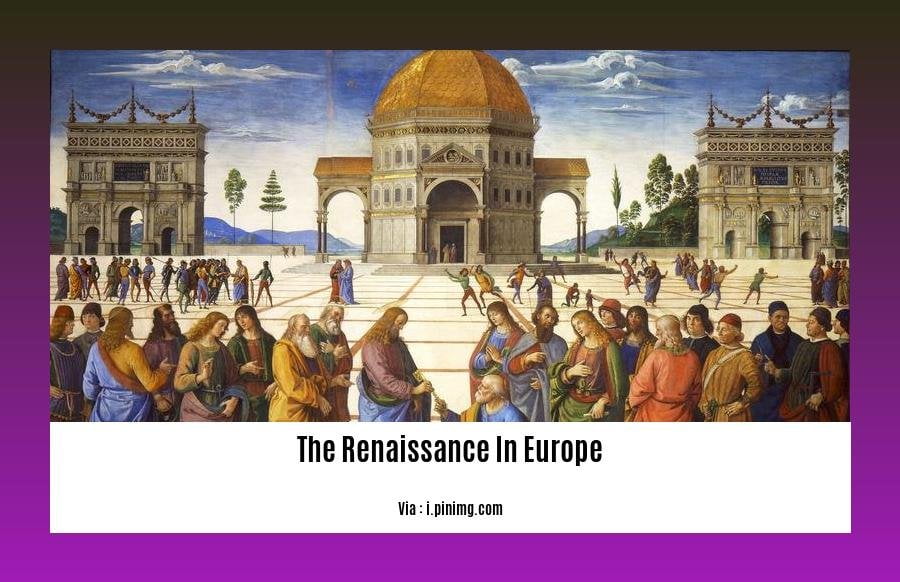
What sparked such a significant cultural shift that bridged the gap between the medieval era and the dawn of modern civilization? The Renaissance in Europe was a pivotal era that left an indelible mark on the world. Let’s delve into the key aspects that defined this extraordinary period.
Revival of Classical Ideals
The Renaissance witnessed a profound rediscovery of ancient Greek and Roman literature, philosophy, and art. Scholars and artists drew inspiration from these classical sources, incorporating humanist principles that emphasized reason, individualism, and the pursuit of knowledge. The study of Latin and Greek texts sparked a renewed appreciation for the eloquence and wisdom of antiquity.
Artistic Revolution
The Renaissance unleashed a burst of artistic brilliance that transformed the visual arts. Artists like Leonardo da Vinci, Michelangelo, and Raphael mastered techniques such as perspective, naturalism, and anatomy, creating masterpieces that continue to captivate us today. The emphasis on realism and emotional expression set the stage for the development of Baroque and Rococo styles in later centuries.
Scientific Advancements
The Renaissance fostered a spirit of inquiry that extended beyond the arts. Scientists like Nicolaus Copernicus and Galileo Galilei challenged traditional beliefs, proposing groundbreaking theories that laid the foundation for modern science. Their discoveries revolutionized our understanding of the universe and laid the groundwork for the Scientific Revolution.
Political and Economic Changes
The Renaissance also marked a period of political and economic transformation in Europe. The rise of nation-states led to increased centralized authority, while the growth of trade and commerce fostered urbanization and economic prosperity. The emergence of merchant and banking families, such as the Medici in Florence, played a significant role in shaping the social and cultural landscape.
Legacy of the Renaissance
The Renaissance left a lasting legacy on European and global civilization. Its emphasis on humanism, reason, and the pursuit of knowledge laid the groundwork for the Enlightenment and the development of modern science, philosophy, and art. The masterpieces created during this period continue to inspire and captivate audiences to this day.
Uncover the rich tapestry of Europe’s past by delving into the History of Europe, a captivating journey through centuries of cultural, political, and social transformations.
Witness the transformative impact of the Industrial Revolution on Europe, where technological advancements propelled societies into an era of unprecedented progress and urbanization.
Explore the intricacies of the European Union’s formation, a groundbreaking endeavor in international cooperation that has shaped the political and economic landscape of Europe.
Political and Social Changes: Rise of Nation-States
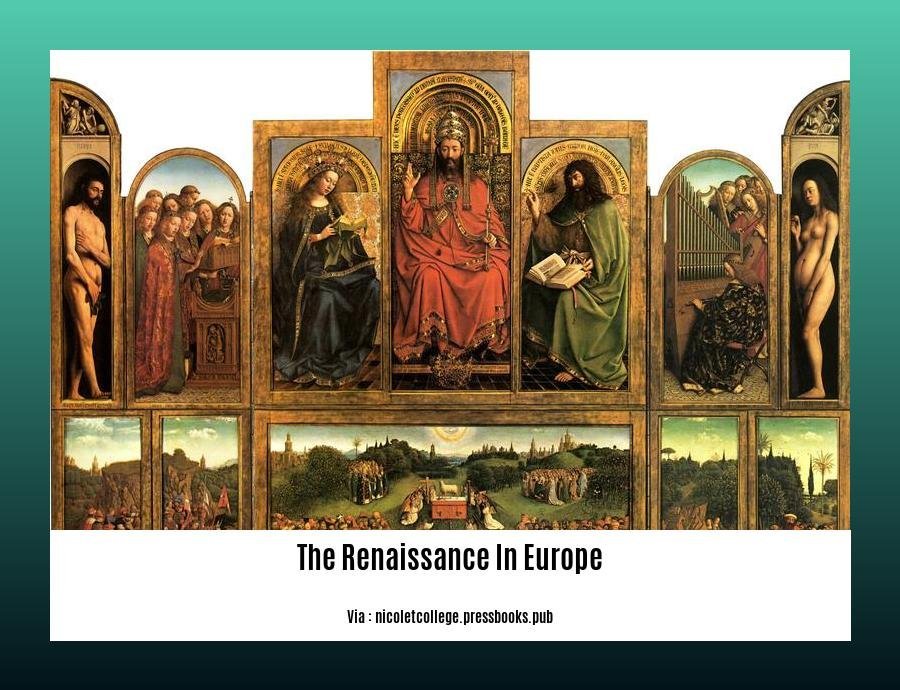
The Renaissance, a period of cultural and intellectual rebirth, also sparked significant political and social changes. During this time, independent city-states began to consolidate into larger, centralized states known as nation-states. These nation-states emerged in response to the need for security, economic growth, and increased power.
Causes of the Rise of Nation-States
- Weakening of the feudal system and the rise of powerful merchant classes
- Technological advancements in weaponry (e.g., gunpowder)
- Intellectual and philosophical challenges to the authority of the Church
- Ambitions of power-hungry rulers
Characteristics of Nation-States
- Centralized government with a defined territory and borders
- Unified legal and administrative systems
- National identity and shared culture
- Increased economic activity and trade
Impact of Nation-States
- Political: Nation-states weakened the power of the nobility and increased the influence of the middle class.
- Social: As nation-states expanded, urbanization and social mobility increased.
- Economic: The emergence of nation-states facilitated the growth of trade and industry.
Example: Italy
Renaissance Italy witnessed a complex interplay of city-states vying for power. The development of political systems known as signorie and republics reflected the challenges and opportunities of nation-state formation.
Key Takeaways:
- The Renaissance fostered the rise of nation-states.
- Nation-states emerged due to a combination of factors, including the weakening of feudalism and advancements in technology.
- Nation-states had significant political, social, and economic impacts.
- Italy served as an example of the complex development of nation-states during the Renaissance.
Relevant URLs:
- Political and Social Setting of the Renaissance
- State in Renaissance Politics
Scientific Revolution and Exploration
Picture this: the world on the brink of a new understanding, where the foundations of modern science and our knowledge of the universe are being laid. Welcome to the Scientific Revolution and Exploration!
Challenging the Old, Embracing the New
Ages-old beliefs crumbled as scholars like Copernicus, Galileo, and Bacon dared to challenge traditional theories. Their observations and experiments revealed the heliocentric solar system, the telescope opened up the wonders of the cosmos, and inductive reasoning set the stage for modern scientific inquiry.
Exploration: Expanding Boundaries
Hand in hand with scientific advancements, a thirst for exploration surged. Adventurers like Columbus and Magellan embarked on epic voyages, expanding the known world and connecting continents. Their discoveries reshaped maps and forever changed our understanding of geography.
Key Takeaways:
- Scientific Revolution:
- Challenged traditional beliefs and authorities.
- Laid the foundation for modern science.
- Key figures: Copernicus, Galileo, Bacon.
- Exploration:
- Expanded the known world.
- Connected continents.
- Reshaped maps and geography.
Sources
Religious Reformation
The catalyst for transformative change
The Religious Reformation was a pivotal moment in shaping the course of European history.
Origins:
Fueled by discontent with perceived corruption and abuses within the Catholic Church, reformers like Martin Luther sparked a movement challenging traditional beliefs and practices.
Key tenets:
Protestants emphasized sola scriptura, the Bible as the sole authority, and rejected the authority of the Pope and Catholic traditions.
Effects:
The Religious Reformation had far-reaching consequences:
- Political conflicts and religious wars as factions fought for control
- Growth of nation-states and weakening of the Holy Roman Empire
- Rise of literacy and education, fostering social and cultural changes
Key Takeaways:
- The Religious Reformation emerged from discontent within the Catholic Church.
- Protestantism emphasized a return to scriptural authority.
- The Religious Reformation had profound effects on religion, society, and politics in Europe.
Relevant URL Sources:
- The Reformation
- Protestant Reformation
FAQ
Q1: What were the key characteristics of the Renaissance in Europe?
Q2: How did the Renaissance contribute to the rise of nation-states?
Q3: What were the major intellectual and scientific achievements of the Renaissance?
Q4: How did the Renaissance impact art and literature?
Q5: What were the social and economic consequences of the Renaissance?
- China II Review: Delicious Food & Speedy Service - April 17, 2025
- Understand Virginia’s Flag: History & Debate - April 17, 2025
- Explore Long Island’s Map: Unique Regions & Insights - April 17, 2025
